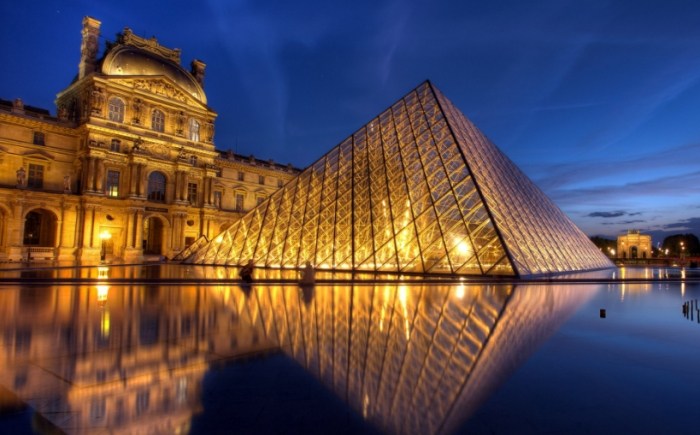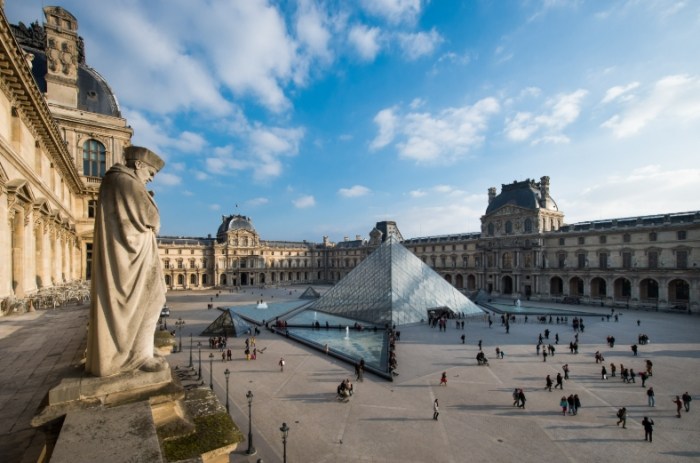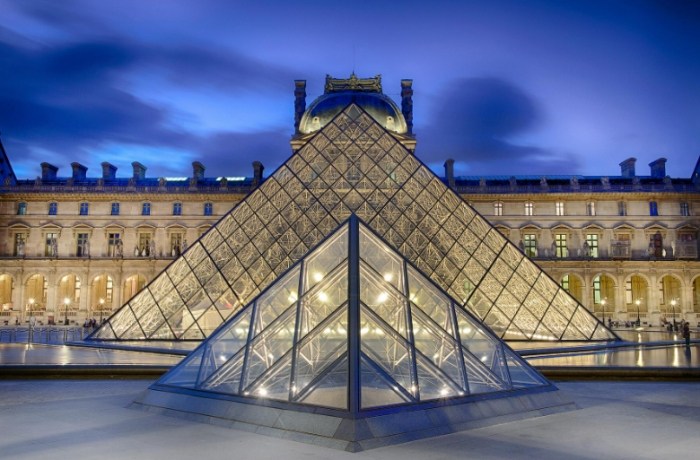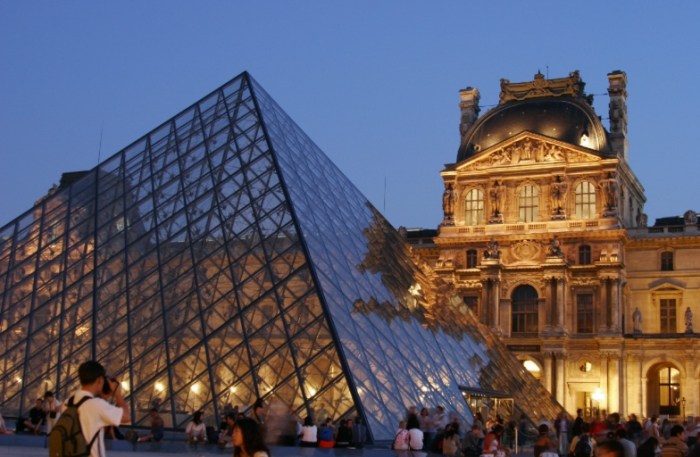Louvre Museum:Must-See Masterpieces & Visiting Tips in Paris
Ready to explore the Louvre Museum in Paris? This complete guide reveals how to visit the world’s largest art museum like a pro! Learn about must-see artworks (Mona Lisa, Venus de Milo), ticket options (including skip-the-line passes), best visiting hours to avoid crowds, hidden galleries, and fascinating history from royal palace to cultural iconPerfect for first-time visitors and art lovers alike!
Table of Contents
- 1. Historical Background: A Journey Through Time
- 2. Cultural Highlights: Masterpieces and More
- 3. Natural and Architectural Splendor
- 4. Practical Information: Planning Your Visit
- 5. Special Experiences and Activities
- 6. Accommodation and Dining: Where to Stay and Eat
- 7. Tips and Etiquette: Making the Most of Your Visit
- 8. Q&A: Frequently Asked Questions
As a lifelong resident of Paris, I have always considered the Louvre Museum more than just a tourist attraction—it's a living, breathing part of our city's soul
Advertisements
Nestled in the heart of the 1st arrondissement, this iconic institution is a testament to centuries of human creativity, history, and ambitionWhether you're a first-time visitor or a seasoned traveler, the Louvre offers an unparalleled experience that transcends time and cultureIn this comprehensive guide, I'll walk you through everything you need to know to make the most of your visit, from historical insights to practical tips, ensuring you leave with memories that last a lifetime.
1. Historical Background: A Journey Through Time

1.1 Origins of the Louvre
The Louvre's story begins in the 12th century as a fortress built by King Philippe Auguste to protect Paris from Viking invasionsOver the centuries, it evolved into a royal residence, a symbol of French monarchy, and eventually, the world's largest art museumThe transformation from a defensive stronghold to a cultural hub mirrors Paris's own journey from a medieval city to a global capital of art and ideas.
1.2 Key Historical Milestones
- 1546: King Francis I begins converting the Louvre into a Renaissance palace, marking the start of its artistic transformation.
- 1793: The Louvre officially opens as a public museum during the French Revolution, showcasing art confiscated from the monarchy and the church.
- 1803: Napoleon Bonaparte expands the collection significantly, renaming it the "Musée Napoléon."
- 1989: The I.MPei-designed glass pyramid opens, revolutionizing the museum's entrance and symbolizing a new era of accessibility and modernity.
1.3 Cultural Significance
The Louvre is not just a repository of art; it's a cultural beacon that reflects France's role in shaping global history
Advertisements
From the Mona Lisa to the Venus de Milo, each masterpiece tells a story of human achievement, innovation, and resilienceThe museum's collection spans continents and centuries, offering visitors a chance to trace the evolution of art and civilization.
2. Cultural Highlights: Masterpieces and More

2.1 Must-See Artworks
- The Mona Lisa (Leonardo da Vinci): Perhaps the most famous painting in the world, the Mona Lisa draws millions of visitors each yearHer enigmatic smile and masterful technique continue to captivate art lovers.
- The Venus de Milo: This ancient Greek sculpture, discovered in 1820, embodies the ideal of beauty and graceIts missing arms only add to its allure, sparking endless debates about its original form.
- Winged Victory of Samothrace: Standing proudly at the top of the Daru staircase, this Hellenistic sculpture celebrates triumph and power, its flowing drapery a testament to the sculptor's skill.
2.2 Lesser-Known Gems
- The Code of Hammurabi: One of the oldest deciphered writings in the world, this Babylonian law code offers insights into ancient legal systems and societal norms.
- The Raft of the Medusa (Théodore Géricault): A haunting depiction of a shipwreck, this painting challenges viewers to confront the horrors of human suffering and the indifference of authority.
- The Coronation of Napoleon (Jacques-Louis David): This monumental work captures the grandeur of Napoleon's coronation, blending historical accuracy with artistic flair.
2.3 Temporary Exhibitions
The Louvre frequently hosts temporary exhibitions that showcase specific artists, periods, or themes
Advertisements
These exhibitions offer a deeper dive into niche areas of art history and often feature loans from other prestigious institutionsCheck the museum's website for upcoming shows during your visit.
3. Natural and Architectural Splendor

3.1 The Louvre Pyramid
Designed by I.MPei, the glass pyramid serves as the museum's main entrance, a striking contrast to the classical architecture surrounding itIts modernity symbolizes the Louvre's commitment to innovation while honoring its pastThe pyramid's interior, with its soaring ceilings and natural light, creates a breathtaking first impression.
3.2 Courtyards and Gardens
The Cour Napoléon, with its central pyramid, is a hub of activity, surrounded by the museum's wingsThe Cour Carrée, a square courtyard with Renaissance-style architecture, offers a peaceful retreat from the crowdsThe Tuileries Garden, adjacent to the Louvre, provides a green oasis in the heart of the city, perfect for a stroll or picnic.
3.3 Architectural Details
The Louvre's facade, adorned with sculptures and carvings, tells the story of French history through artThe Grande Galerie, a 460-meter-long hallway, once served as a royal promenade and now houses some of the museum's most prized paintingsExploring the museum's nooks and crannies reveals hidden gems and architectural marvels at every turn.
4. Practical Information: Planning Your Visit

4.1 Operating Hours
- Wednesday to Monday: 9:00 AM – 6:00 PM
- Closed on Tuesdays
- Extended hours on Fridays: 9:00 AM – 9:45 PM (except during certain exhibitions)
4.2 Ticket Prices
- Standard Ticket: €17 (includes access to permanent collections and temporary exhibitions)
- Free Admission: Under 18s, EU residents aged 18-25, disabled visitors, and job seekers (with proof)
- Skip-the-Line Tickets: Available for an additional fee, ideal for avoiding long queues
4.3 Transportation
- Metro: Lines 1 and 7 (Palais Royal – Musée du Louvre station)
- Bus: Lines 21, 24, 27, 39, 48, 68, 69, 72, 81, 95
- RER: Line C (Musée du Louvre station)
- Parking: Limited parking available nearby; public transportation is recommended
4.4 Best Time to Visit
- Weekdays: Early mornings or late afternoons to avoid crowds
- Off-Season: November to March, when visitor numbers are lower
- Avoid: School holidays, weekends, and peak tourist seasons (June-August)
5. Special Experiences and Activities

5.1 Guided Tours
The Louvre offers a variety of guided tours, including themed tours (e.g., Renaissance art, ancient civilizations), family-friendly tours, and even virtual reality experiences
These tours provide deeper insights into the museum's collections and are led by knowledgeable guides.
5.2 Workshops and Classes
For those looking to engage more deeply with art, the Louvre hosts workshops and classes on topics like drawing, painting, and art historyThese hands-on experiences are perfect for art enthusiasts of all ages.
5.3 Evening Events
On select Fridays, the Louvre hosts evening events, including concerts, lectures, and special exhibitionsThese events offer a unique opportunity to experience the museum in a different light, with live music and a more relaxed atmosphere.
6. Accommodation and Dining: Where to Stay and Eat

6.1 Accommodation Recommendations
- Luxury: Hôtel Ritz Paris, Shangri-La Hotel Paris
- Mid-Range: Hôtel Brighton, Hôtel du Louvre
- Budget: Hôtel de la Place du Louvre, Hôtel des Deux Îles
6.2 Dining Options
- Café Marly: Located beneath the Louvre Pyramid, this elegant café offers French cuisine with a view of the museum's facade.
- Le Grand Véfour: A historic restaurant near the Louvre, known for its gourmet French dishes and opulent decor.
- Le Jules Verne: For a truly unforgettable experience, dine at this Michelin-starred restaurant on the Eiffel Tower, a short walk from the Louvre.
6.3 Local Eats
For a taste of authentic Parisian cuisine, explore the nearby Rue de Rivoli or the Marais districtTry classic dishes like coq au vin, escargots, and crème brûlée at cozy bistros and brasseries.
7. Tips and Etiquette: Making the Most of Your Visit
7.1 Plan Ahead
- Prioritize: Decide which artworks or exhibitions you most want to see and plan your route accordingly.
- Download the App: The Louvre's official app offers maps, audio guides, and real-time information on wait times.
- Book in Advance: Purchase tickets online to skip the line and save time.
7.2 Etiquette
- Respect the Art: Keep a safe distance from artworks and avoid touching them.
- No Photography: Flash photography and selfie sticks are prohibited in certain areas; check signs for guidelines.
- Quiet Zones: The Louvre is a place of contemplation; keep noise to a minimum, especially in galleries.
7.3 Comfort and Convenience
- Wear Comfortable Shoes: The Louvre is vast; expect to walk several kilometers.
- Stay Hydrated: Bring a water bottle (refill stations are available) and take breaks as needed.
- Use the Lockers: Store large bags and backpacks in the lockers provided to avoid restrictions in galleries.
8. Q&A: Frequently Asked Questions
8.1 What days are the Louvres free?
The Louvre offers free admission on the first Saturday of each month from 6:00 PM to 9:45 PM, as well as on Bastille Day (July 14th). Additionally, certain groups (e.g., under 18s, EU residents aged 18-25) qualify for free admission year-round.
8.2 What are the big 3 at the Louvre?
The "Big Three" at the Louvre are widely considered to be the Mona Lisa, the Venus de Milo, and the Winged Victory of Samothrace. These iconic artworks are must-sees for any visitor, but don't overlook the museum's other treasures!
8.3 Is 2 hours enough for Louvre?
Two hours is barely enough to scratch the surface of the Louvre's vast collections